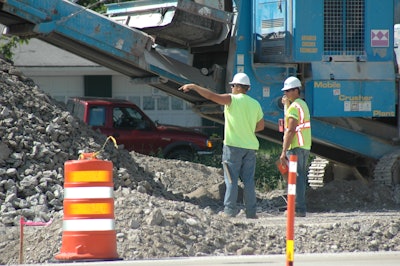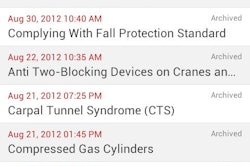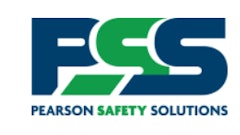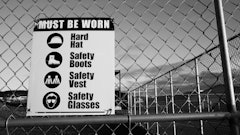
On many construction sites the day starts off with a tailgate talk, where issues related to the job are discussed before the work begins. Safety-related topics are often the focal point of these discussions.
While it’s easy to assume that such talks are effective at conveying information, how certain are you that the information is actually being received? Are workers actively engaged in listening, or are you or whoever else may be leading the discussion being met with glazed eyes, robotic nods and blank stares?
We’ve all been in the workers’ shoes, where you sit through a meeting or presentation and come away with little memory of what was said. The difference is, when this happens on a jobsite, it can result in costly mistakes, delays and even accidents.
There are a variety of reasons why such “communications failures” can occur. Here are just a few possibilities:
- The crew is anxious to get the “real work” started to avoid missing a deadline, and simply rushes away without fully absorbing the information.
- The information is confusing, incomplete or hard to follow. Language barriers may impede comprehension for some workers.
- The conversation is cut short before anyone has a chance to ask questions or get clarification, or they are too intimidated to acknowledge they don’t understand what’s being discussed.
- The speaker is hard to hear, difficult to understand or otherwise hard to follow.
- Trust issues or other animosities cause workers to tune the speaker out.
- The discussion takes a negative tone, which puts workers on the defensive and causes them to stop listening.
- Workers don’t feel empowered to speak up with their ideas or to bring up concerns about problems on the site.
These and other circumstances can impede workers’ ability or willingness to absorb or relate critical information that affects the job being performed and the safety of the work environment. The results may range from unnecessary delays and added costs, to OSHA violations, preventable accidents and other risks.
Of course, not all organizations have outright communications failures, but most have areas that can stand improvement. Start by identifying where those areas are and their underlying cause(s). In addition to face-to-face conversations, consider conducting an anonymous survey of your workforce to obtain their “honest” feedback. Prioritize your findings in terms of their impact on project performance and safety, then take steps to correct the most pressing deficiencies.
Most communications problems/failures can be resolved pretty easily once they’re recognized. But in some cases, it may require outside assistance (e.g., specific safety training). More extreme cases may call for a neutral third party to help you delve into and resolve deeper issues.
A simple first step to improve communications is to ask pointed questions about the topic after each tailgate talk, safety meeting, etc. This will help you determine if the topic was understood, as well as help promote further discussion.
For more information to improve jobsite safety, turn to the Construction Zone Safety and IPAF Elevating Safety supplements.






![[VIDEO] Involving Workers In Your Toolbox Safety Talks](https://img.forconstructionpros.com/files/base/acbm/fcp/image/2016/06/default.574eea59eb52b.png?auto=format%2Ccompress&fit=crop&h=167&q=70&w=250)
![[VIDEO] Choosing a Toolbox or Tailgate Safety Meeting Topic](https://img.forconstructionpros.com/files/base/acbm/fcp/image/2016/06/default.574ee9f43b96b.png?auto=format%2Ccompress&fit=crop&h=167&q=70&w=250)












